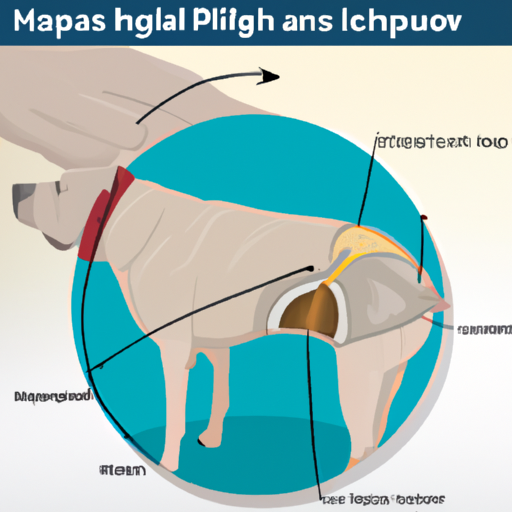Understanding Hip Dysplasia
Hip dysplasia is a common skeletal condition in dogs, especially in larger breeds. It occurs when the ball and socket of the hip joint do not fit together correctly, causing pain and disability. You, as a caregiver, should be aware of this condition and take preventive measures to ensure the well-being of your furry friend.
Recognizing The Symptoms
To prevent hip dysplasia, it’s essential that you can recognize the symptoms early on. These may include:
- Decreased activity
- Difficulty or reluctance rising, jumping, running, or climbing stairs
- Limping
- Loss of thigh muscle mass
- Noticeable enlargement of the shoulder muscles as they compensate for the hind end weakness
Implementing Preventative Measures
There are several steps you can take to prevent this condition in your dog:
- Proper Nutrition: Keep your dog lean to avoid putting extra pressure on the joints. Feed them a balanced diet designed for their specific breed or size.
| Breed Size | Recommended Diet |
|---|---|
| Small | High in protein and fat |
| Large | Lower in protein and fat |
-
Regular Exercise: Regular, moderate exercise can help strengthen the muscles around the joint, reducing the risk of hip dysplasia.
-
Avoid High-Impact Activities: While exercise is important, high-impact activities can be detrimental. Avoid activities that involve a lot of jumping or hard running.
Seeking Professional Guidance
Always consult your vet if you’re concerned about hip dysplasia. They can provide a proper diagnosis and potential treatment options. This might include surgery, physical therapy, or medication to manage the pain. Remember, early detection and intervention can make a significant difference in your dog’s quality of life.
The Role of Genetics
Unfortunately, genetics play a large role in the development of hip dysplasia, and it’s more common in some breeds than others. If you’re considering getting a puppy from a breeder, ensure they test their breeding dogs for this condition. You can’t change your dog’s genes, but you can make sure you’re doing everything in your power to mitigate the risks.
Frequently Asked Questions
Q: Can hip dysplasia be cured?
A: While there’s no cure, there are treatments that can manage the symptoms and improve quality of life.
Q: Are certain breeds more prone to hip dysplasia?
A: Yes, larger breeds like German Shepherds, Labrador Retrievers, and Golden Retrievers are more prone to hip dysplasia.
Q: Does hip dysplasia only affect older dogs?
A: No, hip dysplasia can affect dogs of all ages, but symptoms often start to show in middle-aged to older dogs.
Q: Can hip dysplasia be prevented?
A: While you can’t control genetic factors, maintaining your dog’s proper weight, providing a balanced diet, and ensuring regular, low-impact exercise can help prevent this condition.



